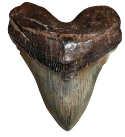Trade and Commodities
The traditional, and still evident, uses of land along the Cooper River reflect the economic aspirations of the first South Carolinians for economic prosperity. Carolina settlers spent most of the early years herding cattle and hogs for export of beef and pork to Barbados and other islands, as well as producing peas and grains. In the meantime, a methodical search was employed in the areas around Charles Town for a single commodity that would bring wealth and prosperity such as tobacco was bringing to Virginia and sugar was bringing to Barbados. The name of Silk Hope Plantation reflects the early idea of growing mulberry trees (not the native ones) and producing silk from caterpillars.
These ventures failed, and the colony’s most significant early exports were livestock and deerskins. This trade, dependent on Indians in the backcountry, eventually declined once naval stores, particularly lumber, tar, pitch, and turpentine-became a profitable option. South Carolina naval stores, although not of the highest quality, assisted the British shipbuilding industry in breaking its dependence on Baltic area naval stores between 1705 and 1720. One historian has argued that this product transformed the Lowcountry economy and made the later widespread acquisition of slaves and the rice culture that grew from it possible.26
A significant brickmaking industry also arose along the Cooper River and was fully established by the 1740s, with many brickmakers of Huguenot descent. Remains of the industry such as those at Parnassus and the Brickyard near the Grove still survive in the region. Brickmaking often occurred in the winter and spring and could be a complimentary means of income to agriculture.
The demand for brick in nearby Charleston, the presence of rich clay deposits along the lower section of the Cooper River and along the Back River, and the presence of slave labor, all combined to ensure a profitable brick industry. Much of the great architecture of the city of Charleston includes brick made in this region, from eighteenth century dwellings to St. Michael’s Episcopal Church. Associated industries such as tilemaking at Redbank Plantation and potteries such as that of John Bartlam at Cainhoy were also a significant part of the Cooper River economy.
Simply the Best In Blackwater Diving
COOPER RIVER DIVE CHARTERS
Historic Resources of the Cooper River, ca. 1670-ca. 1950
Silk Hope Plantation - Huger, SC
Historic Resources of the Cooper River, ca. 1670-ca. 1950
United States Department of the Interior
National Park Service
National Register of Historic Places
Simply the Best In Blackwater Diving
Copyright 2020
Cooper River Dive Charters
260 Amy Drive
Goose Creek, SC 29445
843-296-3344






